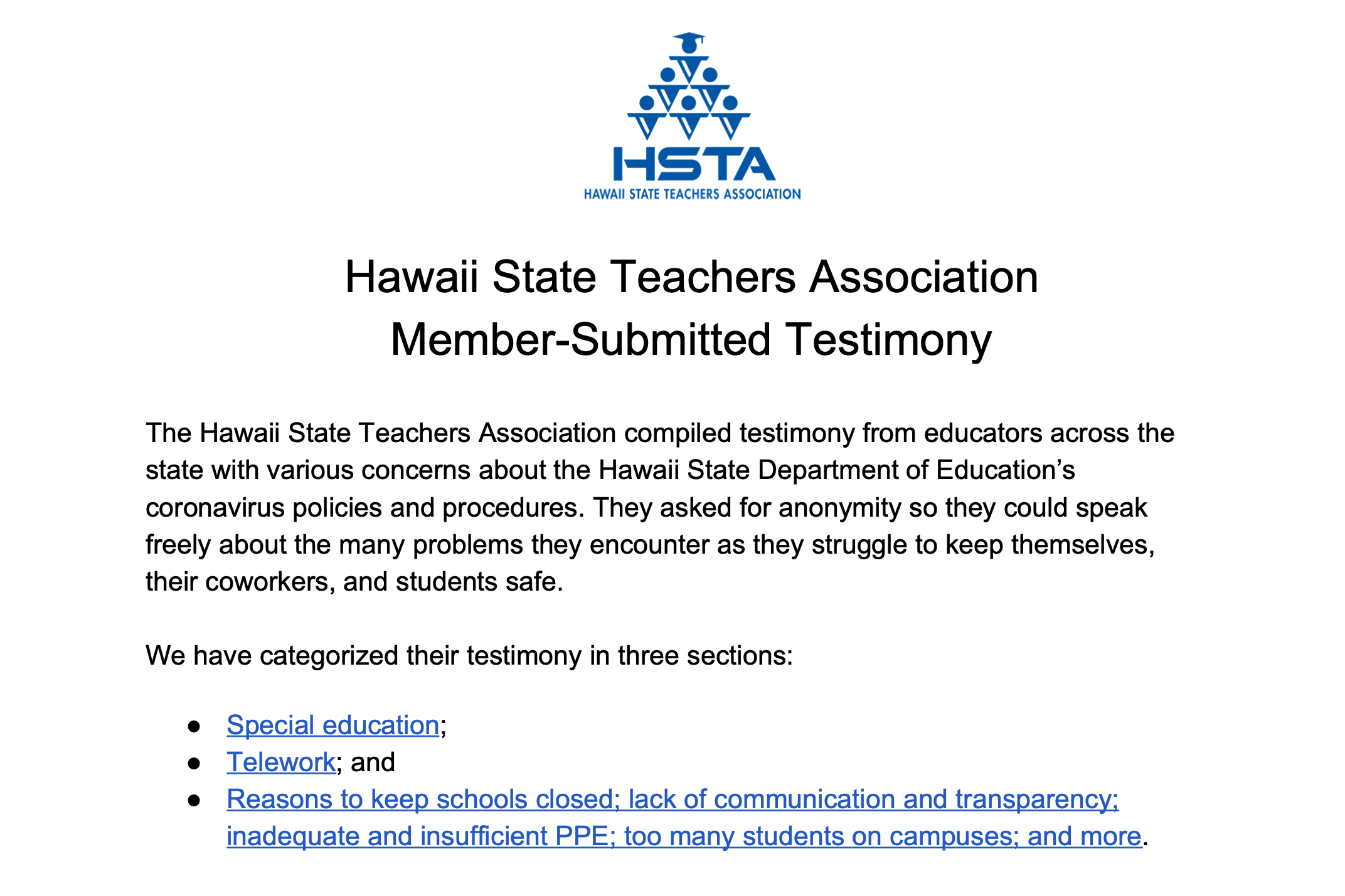Hundreds of educators across the state are voicing their concerns to the Hawaii State Board of Education (BOE) about what’s happening in public schools during the coronavirus pandemic.
In written testimony ahead of the BOE’s general meeting Thursday afternoon, members cited flawed Hawaii State Department of Education (HIDOE) policies and procedures in response to COVID-19.
For the first time, HSTA also compiled and submitted testimony—109 pages worth—on behalf of members who wished to stay anonymous so they could speak freely about the many problems they encounter without fear of retaliation.
Many special education teachers say it is impossible to stay safe during in-person instruction, especially when working in fully self-contained classrooms.
“While I understand that children with special needs have different learning needs, I do not feel it is fair to put all of the teachers, staff, and other students on campus at risk during a pandemic just to make sure these students receive their minutes and services on their IEPs,” one teacher wrote. “I have never felt more disappointed and undervalued during my 18 years as a teacher. I am in that high-risk category as well and I am scared every single day that I go to work, not only for me but for my students and staff as well.”
With no statewide standard or policy, many teachers also expressed frustration with inconsistent and arbitrary approvals and denials of telework requests. At some schools, teachers who have no in-person instructional responsibilities have been forced to report to campus and teach, being told that it “doesn’t benefit the kids if they are teleworking” and to remain in their classrooms, while other schools are allowing educators in the same situation to telework.
Meanwhile, there is no statewide standard regarding what constitutes a vulnerable student and the reasons why they must have in-person instruction. Some schools have no students on campus, while others have dozens, if not hundreds, of special education, English language learner, homeless, and vulnerable students who report no access to the internet at home.
In light of these concerns and more, the HSTA Board of Directors overwhelmingly voted to support Hawaii’s public schools to be in 100-percent distance learning mode for all students until at least the beginning of the second semester of this school year.
In written testimony, HSTA President Corey Rosenlee told the board, “We believe all public school educators should have the option of teleworking. The lack of action and transparency from the Hawaii State Department of Education has put the lives and health of teachers, staff, and our students in jeopardy.”
Since June 26, 89 COVID-19 positive cases have been connected with public school campuses, employees, service providers, and/or students.
At Dole Middle School, a clerk who worked in the office died while being quarantined due to the virus. Before her death and several coronavirus cases at Dole, teachers have been and are still being denied telework. HSTA has heard this is a uniform denial because of the complex area superintendent.
“The HIDOE is secretive and not transparent about the handling of positive cases on school campuses,” Rosenlee said. “They failed to disclose the names of specific schools and numbers of cases or students and staff quarantined on campuses—and that’s even after being criticized by the state auditor, newspaper editorials, the HSTA, and others. The HIDOE continues to suppress this important information that states and cities across the country are disclosing.”
The HIDOE has also not released information on the number of teachers on unpaid or paid sick leave and how many classrooms are being taught by emergency hires or substitutes, Rosenlee noted.
You can listen to the BOE virtual meeting Thursday via Webex here. HSTA will also live stream the meeting on its Facebook page and YouTube channel.
The meeting begins at 1:30 p.m. Thursday, however, the first portion will be conducted in executive session.

